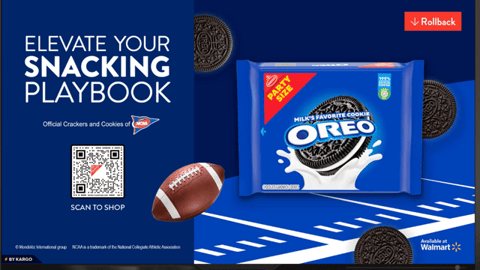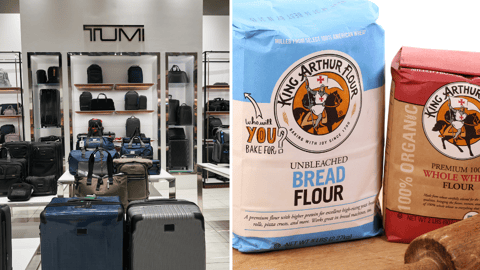Welcome to the New Era of Commerce: 3 Essential Priorities for Consumer Brands
Digital commerce is now an essential part of running a consumer goods business. That goes without saying. But, as digital is embedded ever more deeply, the way companies need to approach their sales channels has fundamentally changed.
The Market Is Moving
In fact, the idea of “digital commerce” — as distinct from physical commerce — is increasingly anachronistic. Neither consumers nor B2B customers think like that anymore. Today, people expect to move freely and seamlessly across both digital and non-digital channels at every point in the buying journey.
Market leaders are making big bets on this blended digital-physical future. Nike, for instance, has already surpassed its target of reaching 30% digital penetration by 2023, and now expects to hit 50% digital sales this year.
Similarly, Nestlé plans to grow digital sales to 25% by 2025, focusing on connecting with customers via its direct-to-consumer channels.
Don’t Get Left Behind
As offline and online strategies are merging, and digital commerce is becoming, simply, commerce, how is the rest of the market responding? For those consumer goods companies with less mature digital commerce strategies, there’s a need for a fundamental rethink — and a growing sense of urgency.
Why? Because, absent a truly holistic approach, more digital sales can mean more costs and more complexity for the business. So when brands stick with what they see as the traditional “tried and tested” approach to digital commerce, they find themselves spending more to sell the same volume of products.
That’s not a sustainable approach. But there are several actions companies can take now to ensure they’re not saddled with a less profitable business as the market moves ahead with digital. Here are three priorities.
1. Owning the Brand Experience
From direct-to-consumer to social commerce to digital marketplaces, digital experiences are increasingly eclipsing traditional media for brand building. For example, Accenture’s research shows 62% of all purchases were influenced digitally last year, up from 49% in 2019.
But the explosion in the number of channels for doing this means bringing a seamless brand experience to life is harder than ever. In doing so, it’s vital to leverage the assets that make the brand unique.
Consider the story of Nespresso and George Clooney. As the face of the brand in traditional media channels, Clooney had become synonymous with Nespresso products in consumers’ minds.
On Nespresso’s product detail pages on digital sales channels, however, this unique relationship wasn’t being used. And when the brand included Clooney in product detail pages as part of a social and digital campaign, the impact was almost immediate: the product sold out.
Of course, not every brand has a George Clooney. But each does have its own brand story and unique assets. The key is to make sure these are being fully leveraged on every channel in every interaction.
2. Rebuilding the Foundation for Future Commerce
The extraordinary speed of digital adoption we’ve seen recently has outpaced the ability of many consumer goods organizations to adapt. Often, companies find their old operating models struggle to scale up in a more digitally focused environment.
One priority should therefore be to develop more scalable technology architectures, integrated data foundations, and advanced analytics to increase the cost-effectiveness of operations. Creating consumer-grade D2C and B2B platforms is another important step in transforming the relationship with customers.
Look at how AB InBev developed BEES, a full digital commerce platform for B2B customers. Now available in 13 countries, BEES can be accessed through a mobile app, giving customers a one-stop-shop for browsing, buying, tracking deliveries, paying invoices, learning about promotions and even receiving personalized recommendations.
In particular, this has transformed the company’s relationships with SME customers. Up to 90% of revenues now come via BEES in some markets. And AB InBev reports the platform is delivering higher net revenue per order and higher delivery frequency per retailer.
3. Becoming a Truly Digital Business
Success today means leaning into the idea of being a fully functioning digital business. By integrating advanced analytics through cloud infrastructure and creating an agile and responsive organization, consumer goods companies can generate and use next-level insights across both front and back office to automatically execute data-driven operations.
An example? Think of the insights brands can now get into their competitors’ out of stocks at a very local level. When marketing, sales, manufacturing, and supply chain come together in an agile and responsive way, the company is able to move immediately to take advantage of this kind of situation (for example by quickly implementing tactical digital shelf investments that highlight the availability of their own products).
Seize the Opportunity
This kind of agility and digital prowess isn’t easy to achieve, but it’s becoming increasingly important. The overarching imperative is to bring digital commerce considerations into the core decisions about how the business is run. That includes the growth strategy, brand building, and category planning, as well as digital operations and customer experience. This, ultimately, is how to build a digital consumer goods business able to compete with the very best.
— Jeriad Zoghby, Global Lead, Omnichannel Commerce, Accenture




